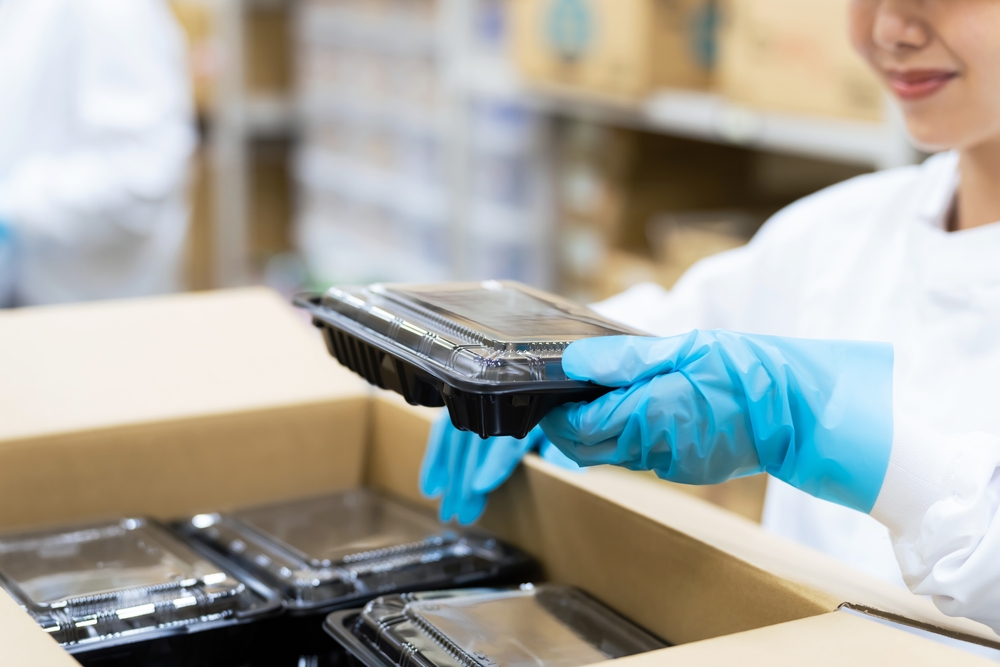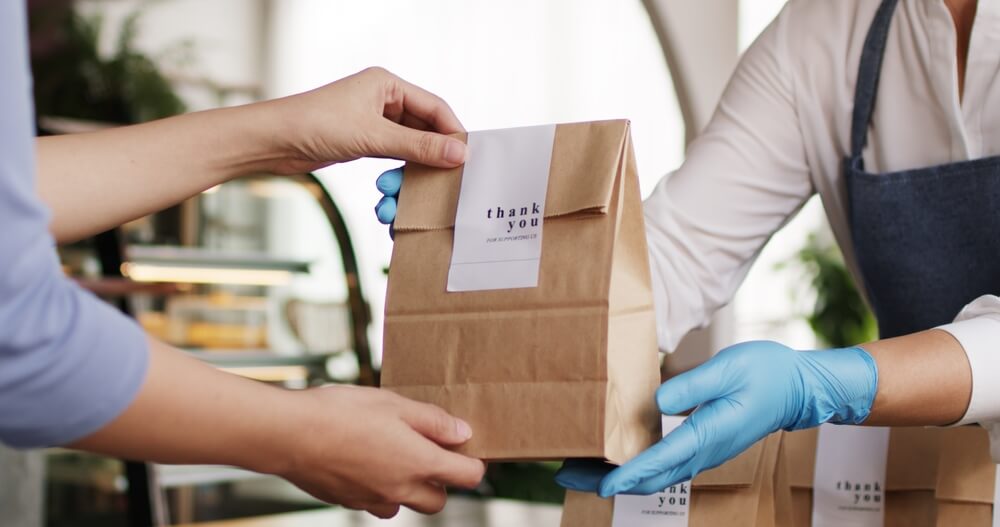Understanding the safety of takeaway food with packaging
Food safety in the context of takeaway packaging refers to the practices and procedures to keep food safe to eat. This starts from the moment the food’s prepared until it reaches the customer. There are several critical steps to ensure the food’s hygiene is maintained and there is no risk of external contamination. If the food isn’t safely stored, it may become spoiled or contaminated by other sources that puts the consumer at risk.

Common Risks Associated with packaging and food safety
Contamination
Food packaging safety regulations aren’t there to make your life more difficult. They are in place to make sure food is safe for consumers and to reduce the environmental impact.
During transportation, food becomes susceptible to various forms of contamination, including bacterial, chemical, and physical. Bacterial contamination can occur during contact between raw and cooked foods, or from contaminated surfaces. Unwashed hands and contaminated containers can also cause bacterial contamination in food. Chemical contamination can occur when chemicals from improperly stored packaging leaches into the food. This includes mycotoxins, heavy metals (such as lead and mercury) and organic pollutants (such as dioxins). Exhaust fumes can also contaminate food with pollutants during transit.
Temperature control
If you don’t store food at the correct temperature, it can become contaminated with bacteria. The likes of Salmonella, E. coli, and Listeria are particularly common if food isn’t stored properly and can cause consumers to become ill.
Material safety
Using food-grade materials for packaging is crucial as it prevents the introduction of harmful chemicals that can leach into food. Food-grade materials don’t react with the food they’re storing, which prevents contamination from harmful substances. The correct materials in takeaway packaging will also preserve the taste and smell of the food, ensuring quality for the consumer.
Best Practices for Ensuring Food Safety in Takeaway Packaging
Material selection
Along with health reasons, you also have an obligation to use safe, non-toxic, and sustainable food packaging materials for environmental and economic reasons. Non-toxic materials will prevent harmful chemicals from leaching into the food. Safe materials will also maintain the taste, odour, and nutritional value of food for consumers. Sustainable food packaging options, such as biodegradable plastics and paper, will reduce pollution and ease the strain on landfill. Sustainable options generally have a lower carbon footprint. They are also made from renewable resources, which reduces our reliance on finite resources like petroleum.
Sealing and Insulation
Properly sealing food prevents contamination from dirt, dust and and other environmental pollutants. It also creates a barrier against pathogens, which prevents harmful bacteria and viruses from entering the food. The food’s freshness and flavour will also be preserved. There will also be a significantly reduced chance of leaking and spills. Insulated food packaging helps maintain the correct food temperature, keeping hot foods hot and cold foods cold. It can also prolong the food’s shelf like and ensure it is at the right temperature when bought or delivered to consumers.
Food safety packaging and labelling information
It is a legal requirement that food is stored in packaging that lists certain information. This includes the type of food, ingredient list, allergen information and quantity of certain ingredients. You must also include the net quantity, use-by or best-before date and any special storage conditions. Organisations must legally include its name and address and country of origin. Many organisations use branded food packaging to not only include the relevant information, but also to increase brand recognition and build a visual identity amongst competitors.
Regulatory Standards and Compliance
The UK has various regulatory standards to ensure the safety of consumers. It’s a legal requirement that all food organisations comply with these regulations. This includes implementing proper food safety practices, training staff, and maintaining rigorous hygiene standards.
You can ensure your staff follow the proper procedures by implementing regular training sessions to ensure they are aware of current food packaging safety regulations and best practices. Staff should also be encouraged to undertake certified food safety courses, such as those offered by the Chartered Institute of Environmental Health (CIEH) or the Royal Society for Public Health (RSPH). Cleaning schedules can help ensure equipment, surfaces, and storage areas are kept hygienic and clean. Labels and food storage areas should also be regularly checked to see if they meet standards.
Consumer Awareness and Responsibility
Raising consumer awareness of correct packaging and food safety is everybody’s responsibility. By educating consumers, you can help reduce foodborne illnesses. Consumers should be aware of the proper cooking temperatures and storage conditions for their food. Understanding the risks of cross-contamination can also encourage consumers to keep surfaces and utensils clean to prevent contamination and bacterial growth. Consumers with food allergies should also be encouraged to read labels so that they can avoid foods that contain allergens.
Safety of Takeaway Food Conclusion
Ensuring food safety, packaging and labelling is observed and correct is a crucial responsibility of food organisations. This means following proper food packaging safety regulations, implementing stringent hygiene practices and regulatory compliance. It’s important to use safe, and where possible, sustainable materials in takeaway food packaging.



